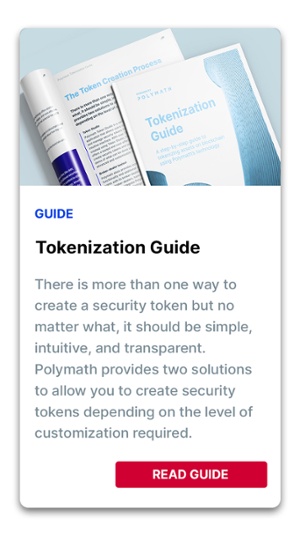If you’ve been following our blog posts on tokenization, you’ll know there’s more to tokenizing an asset than simply creating a security token. Even so, creating a token is undoubtedly the most crucial part of the process: without token configuration, there can be no digital asset.
Once a raise is structured and an ecosystem is mapped out, it’s time to configure a security token.
No matter the technology or the asset type, token configuration should be simple, intuitive, and transparent. Additionally, moving securities to the blockchain should improve traditional processes, rather than eradicate them entirely or introduce new complexities. As Geeth Jay, CEO of Cryptoworth, notes: “Tokenization of securities is the future of capital markets but enterprise adoption hinges on reducing complexity using technology.”
Tokenization of securities is the future of capital markets but enterprise adoption hinges on reducing complexity using technology.
When building our technology, Polymath took these considerations to heart. Polymath technology lets issuers or their agents configure their token in a few simple but important clicks. What’s more, it allows issuers and investors to benefit from the efficiency and immutability of blockchain as well as the trust and familiarity built into the broader financial system. “Polymath’s technology goes a long way to streamlining the token creation and issuance process”, Jay agrees.
 Using Polymath technology as an example, we’ll now explore what token configuration entails. We’ll then take a look at the extra features in Polymath’s configuration process and the benefits they offer to issuers and investors.
Using Polymath technology as an example, we’ll now explore what token configuration entails. We’ll then take a look at the extra features in Polymath’s configuration process and the benefits they offer to issuers and investors.
Fundamentals of Token Configuration
The exact process of token configuration varies for each token issuance platform. Polymath technology makes it possible to originate assets without code, making the tokenization process easy for issuers. At its most fundamental, creating security tokens using Polymath technology starts with two simple steps: reserving a ticker symbol and naming the token.
The ticker registration is what will represent the security token on the blockchain and serve as a unique identifier, intentionally similar to the tickers in the stock market. Users can reserve the ticker name for a limited period of time, during which they can cancel the reservation or create the token.
In order to actually create their token, issuers must make a few important choices.
- Classifying and identifying assets: Polymath lets issuers create traditional assets like equity rounds, REITs, and fixed income, but it also opens the door to new financial instruments by supporting asset types that would be too cumbersome or expensive to manage with traditional methods, like revenue share agreements, new structured products, and custom asset configurations.
- Assigning a securities identifier: Large asset managers require assets to be bankable, and securities identifiers are a key component. Unlike most other tokenization platforms, Polymath lets issuers input a securities identifier (like an ISIN or CUSIP) and codes it into the token. This might appear like a minor feature, but it has huge implications for institutional investors who rely on these identifiers to process and hold assets.
- Setting divisibility: Traditionally, securities could only be bought or sold as full units. Whether it be a penny stock or multi-million dollar building, an investor could only purchase the whole thing. Polymath lets users make tokens divisible, letting investors purchase fractions of a token without creating additional processing overhead. Fractionalization lets investors buy on their own terms and is one of the ways that tokenization has the potential to increase liquidity.
Ultimately, Polymath technology offers an easy way to issue security tokens while offering multiple options to customize their creation. These extra features have the potential to benefit a wide variety of financial participants by opening the door to new financial instruments, facilitating easier securities identifier processes, and permitting fractionalization to increase liquidity.
Download our Tokenization Guide to learn more about tokenizing assets on the blockchain using Polymath technology.

